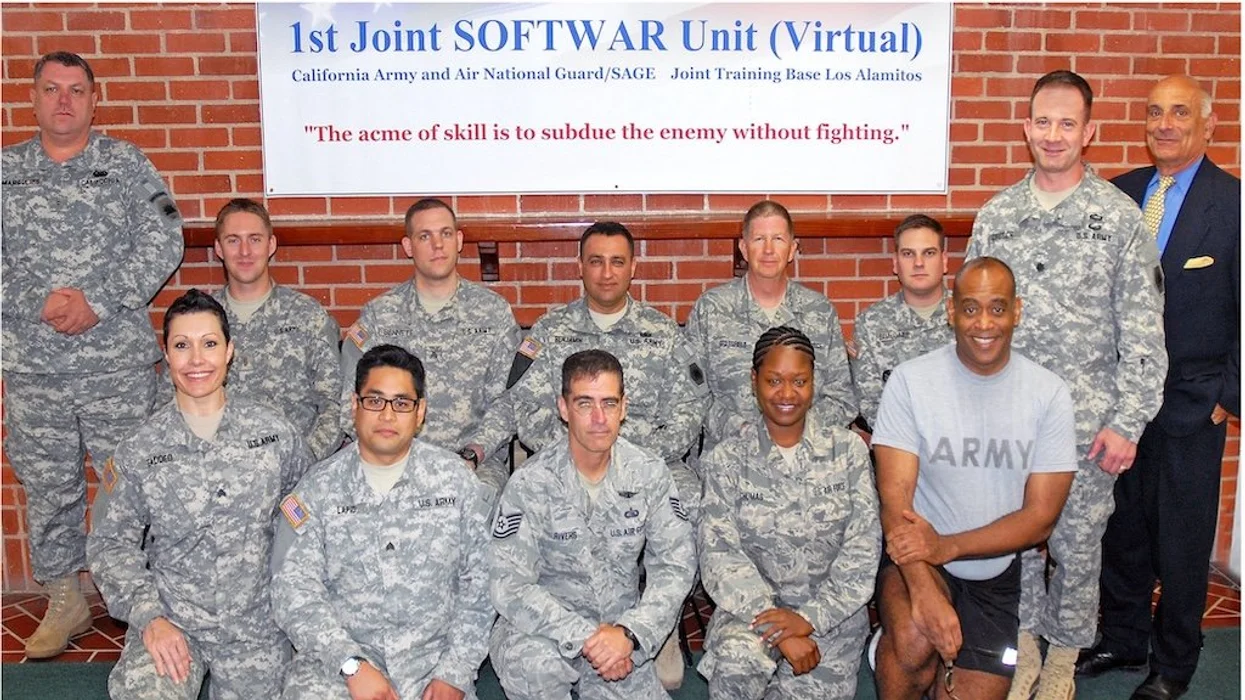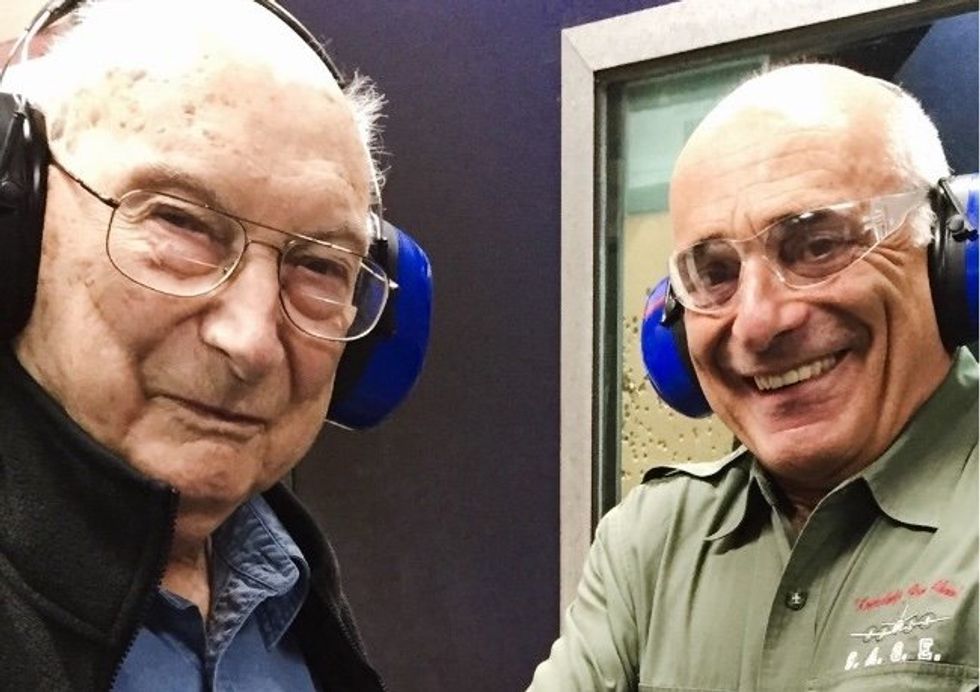Memo to Hegseth: China is winning the info war, but we already built the fix

Last week’s coordinated propaganda assault from the Chinese Communist Party targeted President Trump’s proposed “Golden Dome” missile defense system for the United States. The barrage left Defense Secretary Pete Hegseth scrambling to respond.
No one should find this surprising. China has waged a “slow-motion war” for decades, guided by the strategy outlined in “Unrestricted Warfare,” a 1999 playbook written by two People’s Liberation Army colonels. The book lays out how to dominate a superior adversary without firing a shot — through economic pressure, cyberwarfare, and, most critically, information control.
America must build a permanent, sophisticated information command — one capable of delivering a sustained, strategic response over years, not news cycles.
Information warfare alone won’t defeat China, of course. But as retired U.S. Air Force Colonels John Warden, Larry Weaver, and I argued at “Winning Peer Wars,” it remains a vital pillar of national power.
China’s influence campaign exploits America’s open media environment, manipulating public discourse with ease. Meanwhile, the U.S. barely dents Beijing’s closed, tightly controlled information sphere. The imbalance grows wider by the day.
America must build a permanent, sophisticated information command — one capable of delivering a sustained, strategic response over years, not news cycles. Scattershot messaging and ad hoc counter-narratives won’t cut it. We face a disciplined adversary with a 25-year head start. Let’s act like it.
Introducing SOFTWAR
An experimental U.S. military unit capable of challenging the world’s most aggressive propaganda machines has existed — at least on paper — since 2016. The 1st Joint SOFTWAR Unit (Virtual), or 1st JSU(V), remains in “suspended animation” today, dormant for lack of funding. Yet this unit, with minimal investment, could give the United States a decisive edge against China, Russia, Iran, North Korea, and other hostile actors waging nonstop information warfare against our interests.
The late Andrew W. Marshall, longtime director of the Pentagon’s secretive (and now dismantled) Office of Net Assessment, launched the unit based on SOFTWAR theories by developed this writer. These theories, taught in U.S. war colleges as part of the cyberwar curriculum, emphasized the strategic value of fighting not just with weapons but with ideas, information, and narrative.
 Andrew W. Marshall (left) with Chuck de Caro at the firing rangePhoto courtesy of Chuck de Caro
Andrew W. Marshall (left) with Chuck de Caro at the firing rangePhoto courtesy of Chuck de Caro
Marshall assigned me the task of forming the unit. Assisting as action officer, U.S. Army Col. David Church brought exceptional organizational skill, helping to stand up the 1st JSU(V) in record time. The unit drew from a unique talent pool: 50 airmen and soldiers from the California National Guard, handpicked from a force of 22,000. These service members held civilian jobs in industries critical to information warfare — Hollywood, Silicon Valley, and Big Tech. They were filmmakers, writers, engineers, marketers, and software experts. No active-duty force could match this blend of military discipline and private-sector mastery.
Despite the team’s potential, Obama-era sequestration in 2013 gutted funding just as the concept began to take shape. Temporary duty budgets vanished. Training and operations stalled. Only after California Adjutant General David Baldwin intervened — allowing Guard members to skip home unit training to work on 1st JSU(V) — did the effort stay alive. Even then, progress continued only because many volunteered their own time, collaborating online to refine the concept.
Today, the need for this capability has never been greater. China, Russia, and others wage a slow-motion war against the U.S. through disinformation and psychological manipulation. America’s open media landscape leaves it vulnerable to manipulation, while closed regimes remain immune to our traditional efforts. The Pentagon lacks a centralized, strategic response to this asymmetric threat.
The 1st JSU(V) could change that.
Raising our game
Re-establishing the unit with a permanent charter would give U.S. commanders and agency heads a direct line to elite information warfare specialists. These modern citizen-soldiers know how to dismantle enemy narratives and build winning campaigns for a global audience.
Take General Stanley McChrystal’s disjointed video on the “Eight Imperatives of Counterinsurgency” during the Afghanistan War. Had it been operational, the 1st JSU(V) could have salvaged that amateurish mess and made it effective, to say nothing of watchable. McChrystal’s ultimate downfall — his cluelessness about modern media — led to President Obama firing him. That failure was hardly unique.
In 2009, the Pentagon squandered hundreds of millions of dollars on information operations contracts in Iraq. The Defense Department’s own inspector general flagged the disaster in a report that same year: “Overall, the contracting process resulted in a contract vehicle that was not optimal and may not meet initial psychological operations requirements or user needs.” The IG also found “an internal control weakness” in media services oversight.
RELATED: Memo to Hegseth: It isn’t about AI technology; it’s about counter-AI doctrine
 Saulo Angelo via iStock/Getty Images
Saulo Angelo via iStock/Getty Images
Translation: Pentagon brass didn’t understand the global media environment — and had no business trying to operate in it without real expertise.
That failure could have been avoided. The 1st JSU(V) had already shown it could rapidly extract actionable intelligence from enemy propaganda, including early Al-Qaeda videos. These Guard personnel demonstrated how to identify ideological weaknesses and disrupt enemy messaging by severing its link to target audiences — in real time.
The battlefield has changed
This small, low-cost unit brings strategic firepower. It can undermine enemy influence, break propaganda pipelines, and deny adversaries a clean shot at shaping public perception. The battlefield has changed. We no longer need vast armies or trillion-dollar toys to win the information war. We need cutting-edge communicators with mastery of messaging, narrative, and digital terrain.
That’s exactly what the 1st JSU(V) offers. But without funding, this capability will continue to gather dust.
The Pentagon needs to act quickly. The speed of modern conflict demands an aggressive information posture. Information warfare dominates the battle space — from TikTok to Tehran. If the Defense Department wants to win, it must fully embrace the unique capabilities of our citizen-soldier forces.
The 1st Joint SOFTWAR Unit (Virtual) proved it could counter enemy disinformation. The time has come to reactivate it and make its mission permanent.
Pete Hegseth and current defense leadership must recognize the moment. We already built the prototype. All we need now is the will to activate it.
Source link

